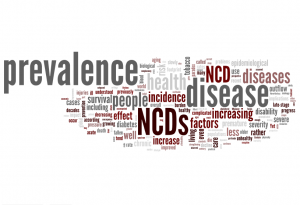Health inequality among people between and within countries is
significant and constitutes an urgent issue of social justice. It is
clear that these health inequalities are the result of differences in
living conditions; the environment in which a person is born, grows,
lives, works, ages, and dies.
Statistics illustrating health inequalities (WHO, Commission of the Social Determinants of Health 2008 Final Report):
- The life time risk of maternal death is 1 in 8 in Afghanistan and 1 in 17 400 in Sweden.
- In Manila’s slums, up to 39% of children aged between 5 and 9 are already infected with TB - twice the national average.
- In Glasgow, a boy born in an affluent suburb can expect to live 82
years while one born in a deprived suburb can expect to live 54 years.
(WHO World Health Report 2006)
Responding to increasing concern about these persisting and widening inequalities, WHO established the
Commission on Social Determinants of Health (CSDH) in 2005
to
provide guidance to Member States and WHO’s programmes by gathering
evidence on social determinants and ways to overcome inequities. The Commission's final report
"Closing the Gap in a Generation" was launched in August 2008.
The report assesses the impact of social determinants of health and
makes recommendations to improve daily living conditions and,
ultimately, work toward a level of social equity necessary to empower
all persons to claim their right to health. It insists on a
multidisciplinary approach to achieving health equity. Improvements to
the health sector alone are insufficient. Policies with the long term
aim of improving health must touch all sectors of society. The report
calls into action government, civil society, international
organizations, and policy makers who shape the conditions under which
people live.
The report includes three overarching recommendations:
Statistics illustrating the effect of social determinants on health
(WHO, Commission of the Social Determinants of Health Final Report
2008):
- In Costa Rica, as a result of improvements made to primary care, the
national infant mortality rate was reduced from 60 to 19 per 1000 live
births between 1970 and 1985.
- In Asia, out-of-pocket healthcare payments pushed 2.7 % of the total
population of 11 low to middle income countries below the very low
poverty threshold of US$ 1/day.
- In Bolivia, the infant mortality of babies born to mothers with no
education is 100 per 1000 live births while the infant mortality of
babies born to mothers with at least secondary education is 40 per 1000.
Further to the publication of the report, the World Health Assembly adopted a resolution
"Reducing health inequities through action on the social determinants of health"(May
2009). The Resolution calls on the international community, including
United Nations agencies, intergovernmental bodies, civil society, and
the private sector to take action in collaboration with WHO’s Member
States and the WHO Secretariat to assess the impacts of policies and
programmes on health inequities and address the social determinants of
health
WHO has convened the
World Conference on Social Determinants of Health (WCSDH),
from 19-21 October 2011, in Rio de Janeiro, with the support of the
Government of the Federative Republic of Brazil. In view of this event,
WHO had launched a
consultation on a draft technical paper
which aims to inform the conference discussions and provide
policy-makers with an overview of key strategies to implement action on
SDH.
WHO Regional Offices commissioned
case studies
for the World Conference on Social Determinants of Health. These case
studies present successful examples of policy action aiming to reduce
health inequities, covering a wide range of issues, including
conditional cash transfers, gender-based violence, tuberculosis
programmes and maternal and child health.
in WMA.NET 















